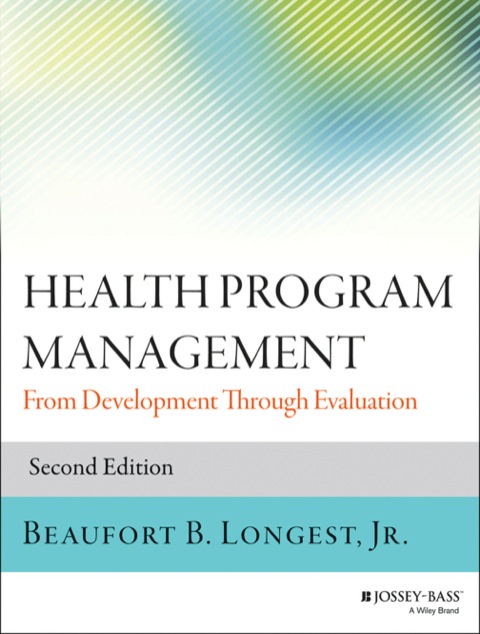Description
Efnisyfirlit
- Contents
- List of Figures, Tables, and Exhibits
- Preface
- Acknowledgments
- The Author
- Chapter 1: The Work of Managers in Health Programs
- Key Definitions
- Health and Health Determinants
- Health Programs
- Program Management
- The Work of Program Managers in Terms of Core and Facilitative Activities
- Core Activities in Program Management Work
- Developing/Strategizing
- Designing
- Leading
- Facilitative Activities in Program Management Work
- Decision Making
- Communicating
- Managing Quality
- Marketing
- Evaluating
- Roles Played by Program Managers: The Mintzberg Model
- Interpersonal Roles
- Informational Roles
- Decisional Roles
- The Gestalt of Program Managers’ Roles
- Competencies That Underpin Program Management Work
- Conceptual Competence
- Technical (Managerial and Clinical) Competence
- Interpersonal and Collaborative Competence
- Policy Competence
- Commercial Competence
- Managers’ Use of Different Mixes of Competencies
- Managing Health Programs Ethically
- Respect for Persons
- Justice
- Beneficence and Nonmaleficence
- Supporting Ethical Behavior in Health Programs
- Managers and the Success of Programs
- Appendix A: Example of a Health Program: The Global Health Program of The Bill and Melinda Gates Fou
- Appendix B: Example of a Health Project: The Mass General Care Management Project
- Chapter 2: Developing/Strategizing the Future
- Developing the Underlying Theory of a Program
- Using Program Theory and Logic Models in Establishing and Maintaining Effective Stakeholder Relation
- Developing/Strategizing Activity
- Situational Analysis: Determining a Program’s Current Situation
- External Situational Analysis
- Internal Situational Analysis
- Inventory of Desired Results
- Reconsidering and Revising a Program’s Current Situation
- Reconsidering and Revising Statements of Missions and Objectives
- Developing Operational Plans to Accomplish Missions and Objectives and Changes in Them
- Assessing and Controlling Performance to Achieve Desired Results
- Controlling Defined and Modeled
- Budgets and Effective Control
- The Link between Developing/Strategizing and the Performance of Programs
- Writing a Business Plan
- Planning for Interventions Undertaken by Programs
- Chapter 3: Designing For Effectiveness
- Creating Organization Designs
- Key Concepts in Formal Organization Design
- Division of Work and Specialization of Workers
- Authority and Responsibility Relationships
- Clustering or Departmentalization
- Span of Control
- Coordination or Integration
- Application of the Key Organization Design Concepts
- Informal Aspects of Organization Designs
- Informal Groups within Organization Designs
- Balancing the Informal and Formal Aspects of Organization Designs
- Designing Program Logic Models
- The Staffing Process in Health Programs
- Human Resource Planning
- Recruitment
- Selection
- Induction and Orientation
- Training and Development
- Performance Appraisal
- Promotions, Transfers, Demotions, and Separations
- Special Aspects of the Staffing Process
- Chapter 4: Leading to Accomplish Desired Results
- Leading Defined
- Influence and Leading; Interpersonal Power and Influence
- Motivation as a Basis for Leading Effectively
- Motivation Defined and Modeled
- How Motivation Occurs
- The Ongoing Search to Understand Effective Leading
- Leader Traits
- Leader Behaviors and Styles of Leading
- Situational or Contingency Models of Leading
- Toward an Integrative Approach to Effective Leading in Health Programs
- Chapter 5: Making Good Management Decisions
- Decision Making Defined
- Involving Other Program Participants in Decision Making
- Key Characteristics of Management Decisions and Decision Making in Programs
- The Decision-Making Process
- Becoming Aware That a Problem or Opportunity Exists
- Defining the Problem or Opportunity
- Developing Relevant Alternatives
- Assessing the Alternatives
- Choosing an Alternative
- Implementing the Decision
- Evaluating the Decision
- Chapter 6: Communicating for Understanding
- Communicating: Key to Effective Stakeholder Relations
- Managing Stakeholder Relationships
- A Model of the Communication Process
- Components of the Communication Process
- Using the Communication Process Effectively
- Barriers to Communicating Effectively
- Contextual Barriers
- Interpersonal Barriers
- Minimizing Barriers to Communicating Effectively
- Communicating within Programs
- Downward Flow
- Upward Flow
- Horizontal and Diagonal Flows
- Communication Networks
- Informal Communication
- Communicating with External Stakeholders
- Managers as Boundary Spanners
- Communicating in Marketing
- Communicating with the Public Sector
- Communicating When Something Goes Wrong
- Consequences When Something Goes Wrong
- What Managers Can Do When Things Go Wrong
- Chapter 7: Managing Quality—Totally
- Quality Defined
- Measuring Quality
- Managing Quality
- A Total Quality Approach to Managing Quality
- Patient/Customer Focus
- Continuous Improvement
- Six Sigma
- Toyota Production System
- FOCUS-PDCA Model
- Tools for CI
- Teamwork
- Team Effectiveness
- Team Structure
- Team Operation
- Chapter 8: Commercial and Social Marketing
- Commercial Marketing
- Social Marketing
- Commercial Marketing in Health Programs
- The Concept of Target Markets
- The Needs and Wants of People in Target Markets
- The Five Ps of Commercial Marketing
- Product or Service
- Price
- Place
- Promotion
- Social Marketing in Health Programs
- Conducting Social Marketing Initiatives in Health Programs
- I. Problem/Health Issue
- II. Target Audience
- III. Behavior
- IV. Strategies for Change
- Ensuring the Success of Social Marketing Initiatives
- Ethics Considerations in Commercial and Social Marketing Strategies
- Appendix C: A Step-by-Step Social Marketing Process
- Chapter 9: Evaluating
- Program Evaluation Defined
- What Do Program Managers Evaluate?
- Program Theory and Logic Models
- Evaluations with and without a Program Theory
- Uses of Program Theory and Logic Models in Program Evaluation
- Types of Program Evaluations
- The CDC Framework for Conducting Program Evaluations
- Standards in the CDC Evaluation Framework
- Steps in the CDC Evaluation Framework
- Engaging Stakeholders
- Describing the Program
- Focusing the Evaluation Design
- Gathering Credible Evidence
- Justifying Conclusions and Making Recommendations
- Ensuring Use and Sharing Lessons Learned
- Index
- End User License Agreement






Reviews
There are no reviews yet.